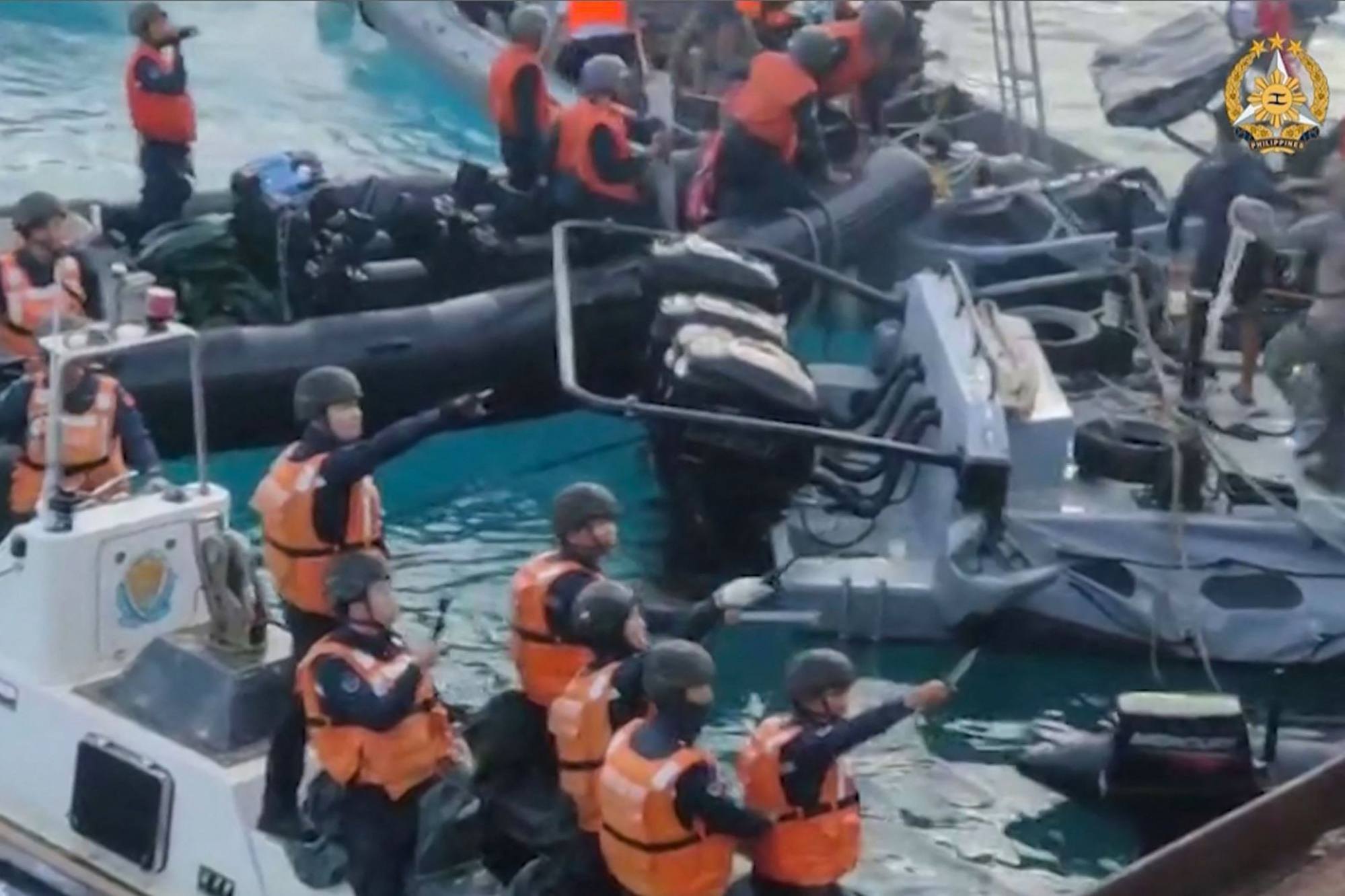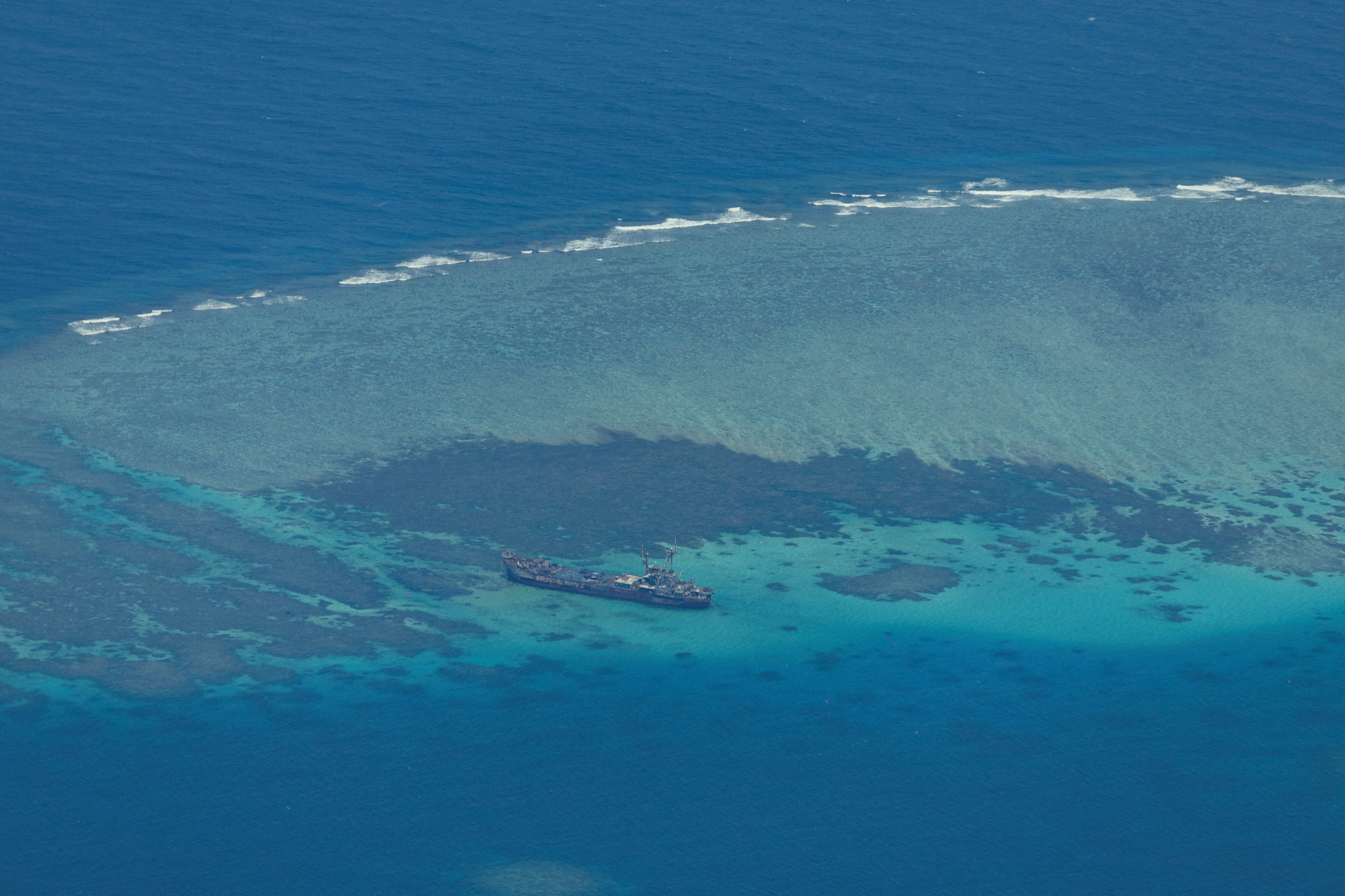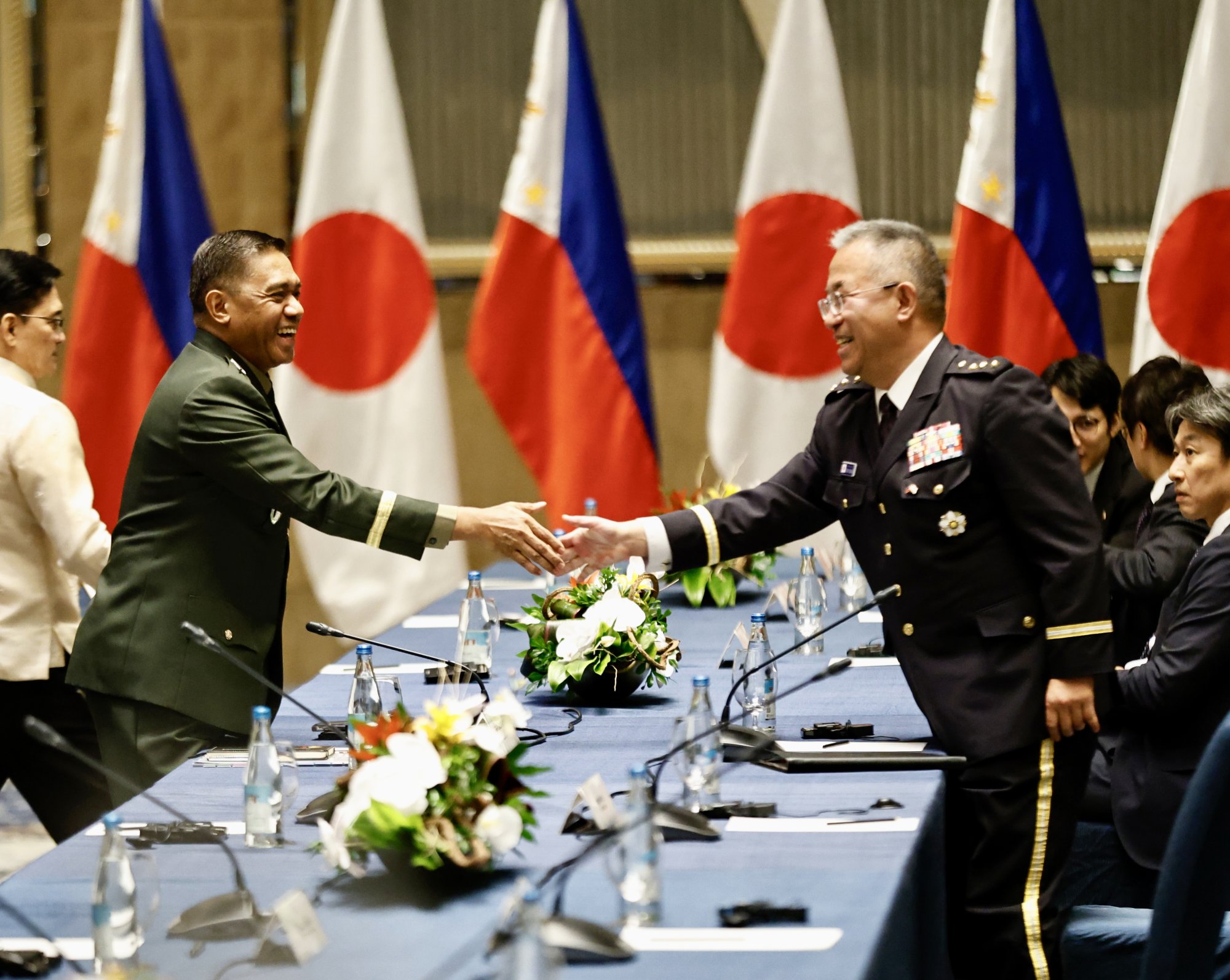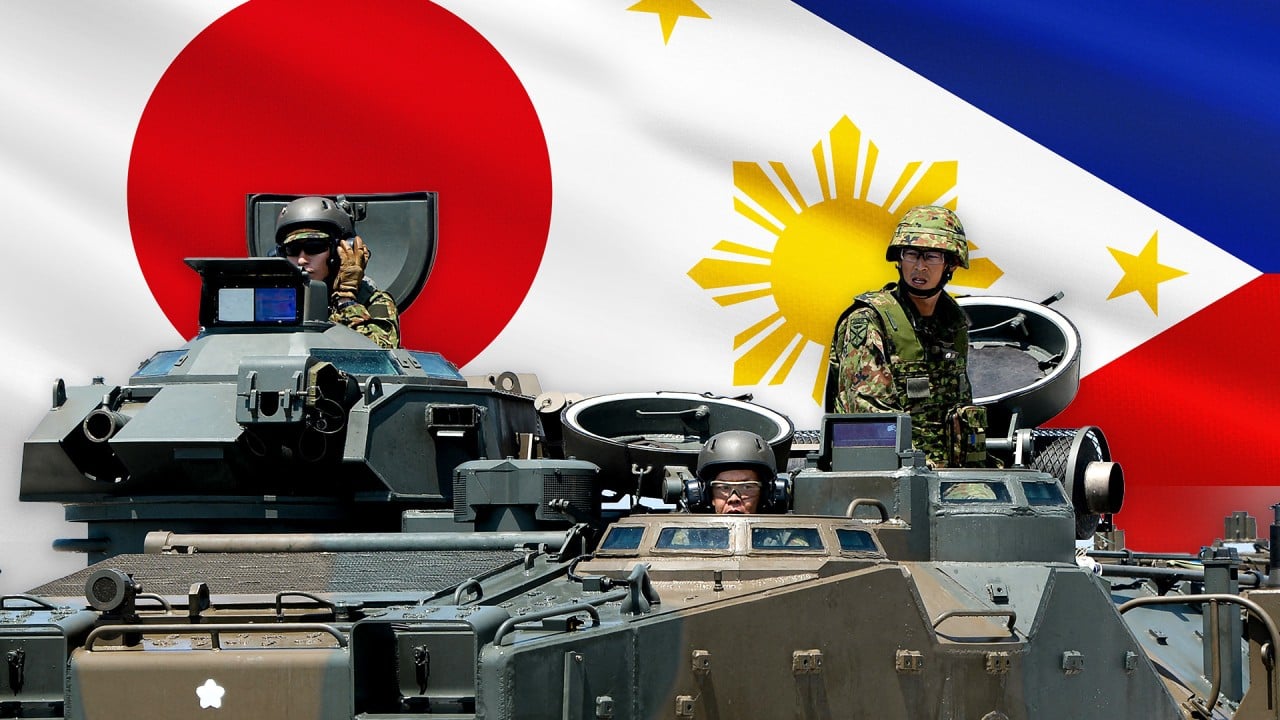Philippines on tenterhooks as China deploys ‘darker grey’ tactics in South China Sea
Defence analyst V.K. Parada said the incident was the first recorded instance of Chinese personnel deliberately boarding a commissioned Filipino vessel, unlike previous stand-offs between both countries.
“They seized the supplies and firearms aboard and threatened Navy personnel aboard with melee weapons – like pirates,” Parada said. The Filipino officer’s injury was the most serious incident since the Philippines began its resupply missions to the grounded BRP Sierra Madre vessel on the Second Thomas Shoal, he added.
Observers pointed to more aggressive manoeuvres from the CCG and Beijing’s maritime militia.

Manila has accused the CCG of blocking its supply missions and delaying the provision of humanitarian aid, such as the rescue of injured Filipino fishermen whose boat engine exploded near Scarborough Shoal on June 29, and the evacuation of a sick sailor aboard the BRP Sierra Madre on July 7.
In addition to its “intimidation tactics” at sea, Manhit said Beijing has intensified its information warfare by rapidly publicising its narratives about the bilateral dispute to shape external perceptions.
China has long claimed most of the South China Sea as part of its territory based on “historical rights” through its so-called nine-dash line on its maps, overlapping with the Philippines’ 200-nautical mile exclusive economic zone, the latter of which is recognised under the United Nations Convention on the Law of the Sea.
In 2016, the Philippines won an arbitral ruling at The Hague, which ruled that China’s historical claims ran counter to international maritime law and lacked historical basis, a decision that Beijing has continuously rejected.
China has long deployed grey zone tactics against the Philippines and other claimants in the South China Sea to strengthen its position in the maritime region. Apart from the two countries, Malaysia, Vietnam and Brunei also claim parts of the disputed waters.

“When the Philippines refuses to acknowledge what China believes to be the truth, it [Beijing] punishes the former through darker grey zone tactics. Some notable examples are seizing airlift supplies, violent boarding of rafts and ramming. I’d say this becomes much more dangerous but calculated on the Chinese side than water cannons and laser tagging [in previous incidents],” said Joshua Espeña, vice president of the International Development and Security Cooperation.
China’s increasingly assertive stance in the West Philippine Sea – Manila’s term for an area of the South China Sea that includes its exclusive economic zone – is not surprising as it is aimed at testing the Philippines’ defence pacts with other countries, notably its mutual defence treaty (MDT) with the United States, analysts say.
Manila and Tokyo signed a reciprocal access agreement this week to enable both countries’ forces to enter each other’s territory for bilateral military exercises.
Despite experiencing some backlash, China has not suffered significant damage to its reputation as Southeast Asian countries have taken a “soft stance” on the territorial dispute, said Matteo Piasentini, a lecturer at the University of the Philippines’ political science department.
“The Philippines has [since firmed up its tone] and has been very vocal by setting red lines and mentioning the MDT on multiple occasions. This prompted China to test Manila’s resolve through escalation,” Piasentini said.

Potential ‘slippery slope’
Analysts say China’s evolving grey zone tactics reflect the country’s growing confidence in asserting its claims and its intent to alter the status quo in the region.
Marcos Jnr’s comment in May that Manila and its allies would respond “if a Filipino citizen is killed by a wilful act” was a strategic misstep as he had revealed his hand to Beijing, Parada said.
“Demarcating the threshold for invoking the MDT means that Beijing simply has to ‘lower the goalposts’ and continue escalation until it reaches just a hair’s breadth of war or casualties,” he said.
While the Philippines and China committed themselves to de-escalating tensions at a bilateral meeting in Manila earlier this month, whether this would be reflected on the ground remains to be seen, analysts say.
“The next resupply mission to Ayungin Shoal can offer a glimpse of whether the meeting was a success in avoiding another violent episode,” said Lucio Blanco Pitlo III, a research fellow at the Asia-Pacific Pathways to Progress Foundation.
As Chinese vessels remain present and assertive in the South China Sea, the Philippines could find itself on a “slippery slope” to maintain its “high ground”, Parada said.
“[China is maintaining] below the threshold of armed conflict – enough to intimidate and injure but not necessarily lead to loss of life. The goal is to apply constant yet gradual pressure against the other party and force it to make a mistake.”
Parada added that China’s tactics were similar to those it has used against other rivals, such as its border clashes with India in 2020 and 2021.
The Philippines is finding itself in a tight spot as it seeks to de-escalate tensions against China, according to Parada.
While the country has refused help from the US for its resupply missions to the Second Thomas Shoal, it also has to assuage Filipinos’ fears over the South China Sea, said Parada, who called for a fundamental shift in Manila’s response.
“That means establishing clear rules of engagement that don’t compromise the lives of our servicemen, finding new ways of conducting resupply missions at Ayungin Shoal and figuring out what exactly our end goal is in the South China Sea.”
